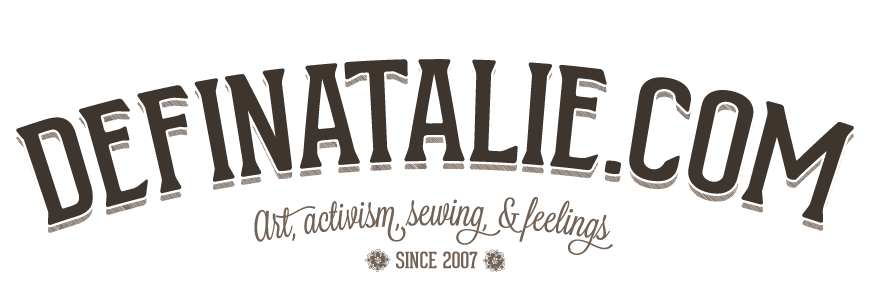I have friends who are photographers and web designers, and most of them use Photoshop primarily for their work. This just totally confounds me, because there are many instances where they could supplement their work with bits and pieces created in Illustrator.
“But Illustrator confuses me!” they cry.
So, it appears I’m one of the crazy guys who can switch “modes” when using these programs. To be completely honest, there is a brain flip you need to do when you start to use Illustrator after using Photoshop for years.
The Photoshop/ Illustrator mind meld trick
Keep the following in mind when you’re cracking open your never-been-used copy of Illustrator:
Layers
Photoshop is a lot like painting on different panes of glass. To paint on one layer, you need to grab it and ready your tools before applying your medium to the surface. We do this by selecting the layer, our surface, and then applying our media to that surface.
Illustrator is rather like 2 dimensional sculpture. Imagine that you are creating objects out of wire. To manipulate one object, you must pick it up first, and then put it down before manipulating another object. The layers in the Illustrator layers palette help you group the objects you are working with. Expand your layer group before clicking willy nilly – this will help you see which object is being selected and manipulated.
“I can tell by the pixels and having seen quite a few shops in my time”
The pixels work differently in both programs as well. For instance, I always approach Photoshop as if I were painting with acrylics. I push the pixels, or the medium, around with my brush, or the mouse/ pointing device. In Illustrator, I use my pointing device to manipulate the points of my “wire” object”. I can manipulate my object by scaling it up or down with no effect on the quality of my object. If I try to do this in Photoshop (via the Transform tool) I do notice a significant effect on the quality. That’s because the pixels are being squished and stretched. On the other hand the vector points in Illustrator have a mathematical relationship to each other.
The canvas or the artboard?
Photoshop refers to the area in which we can do our thang as the “Canvas”, whereas Illustrator calls it the “Artboard”. The canvas in Photoshop is totally restricted to the area that you set, whereas in Illustrator we can play beyond the confines of the Artboard’s dimensions. I use the area outside the Artboard to play in, to test things out and to drop in colour palettes that I might like to use. When I’m resolving my work, I move my artwork within the confines of the Artboard and start to tidy up the area I call my “sand pit”. If you export your artwork in Illustrator to pdf or png, you might find that it saves everything – your Artboard as well as the objects that float around outside it, so it’s best to make sure you’ve tidied it all up before that stage.
These are just a few of the issues that have come up in discussions with friends about the shift from Photoshop to Illustrator. I’m totally happy to help you if you’ve got other unanswered Illustrator mysteries too!

I’m responding to a pretty old article here, but I thought I’d say that I’m rather surprised that some people find Illustrator’s use of vector instead of raster graphics. You maybe know these terms, the correct terms for the difference between Illustrator “wires” and Photoshop “pixels” and are trying to keep it simple. I’m not sure. I tend to think not explaining and using the proper terms actually leaves out valuable knowledge. If they don’t know how these things are labelled in the design world, they can’t communicate effectively about them.
I’d also add that pixels in raster graphics aren’t “squished and stretched”. In fact pixels are merges in a downsample and new pixels are interpolated into the space created by upscaling. As you say, this leads to substantial quality loss. Logos, for instance, should always be created and provided to the customer as vector graphics because they will be used at many different sizes and resolutions.
A quick tip for beginners: if you resize a raster image, always make sure the last thing you do before you save is sharpen the image. This is usually best done using the Unsharp Mask filter in Photoshop. In this way, you can recover some of the crispness of the lines and contrasts of the raster graphics, things that are always loss in nearly any resize operation.
Thank you, Natalie, for opening a discussion and addressing this. It’ll definitely help those still learning Adobe Creative Suite and graphic design in general.